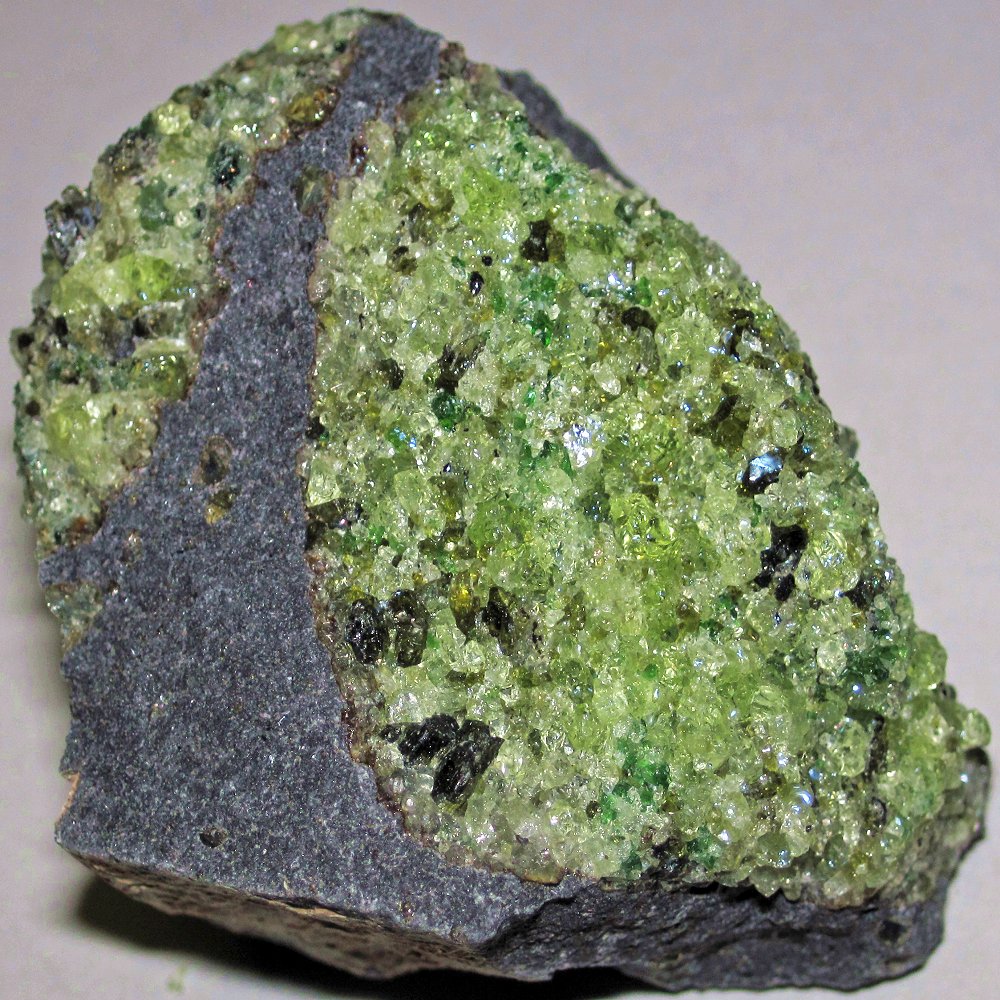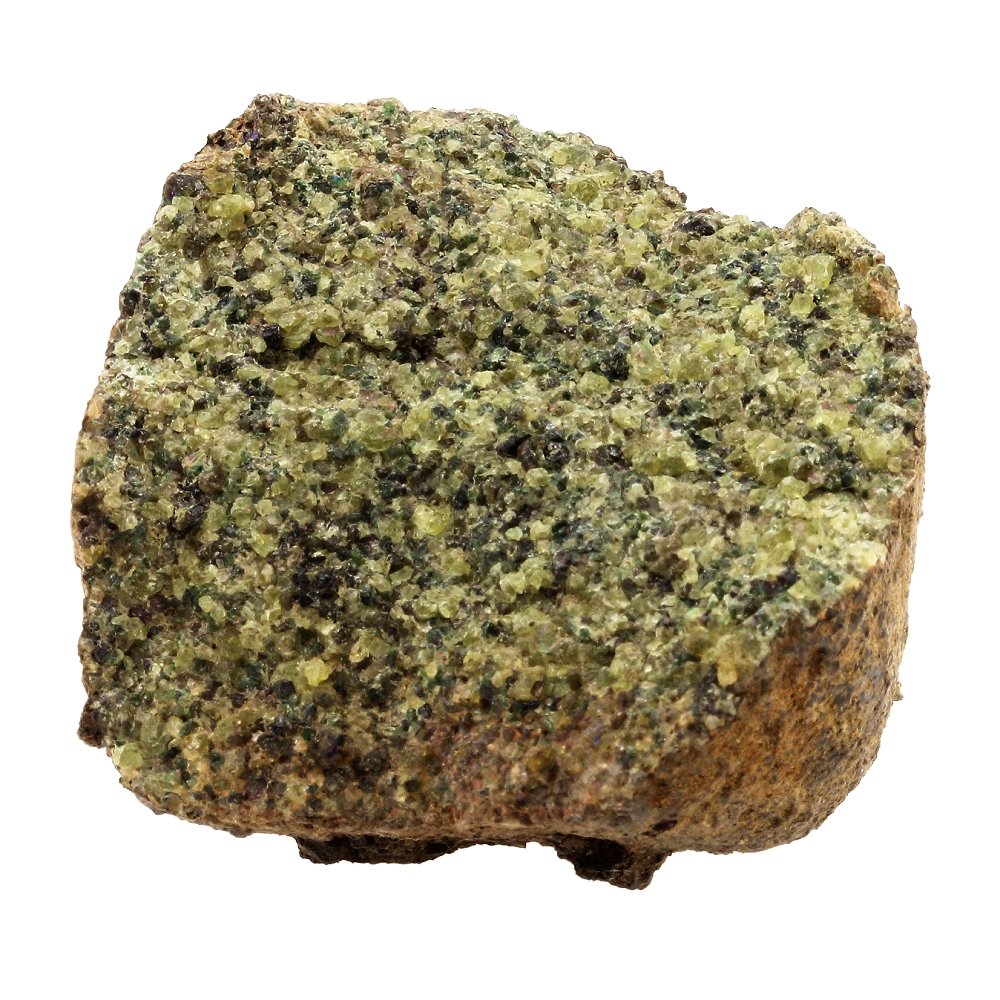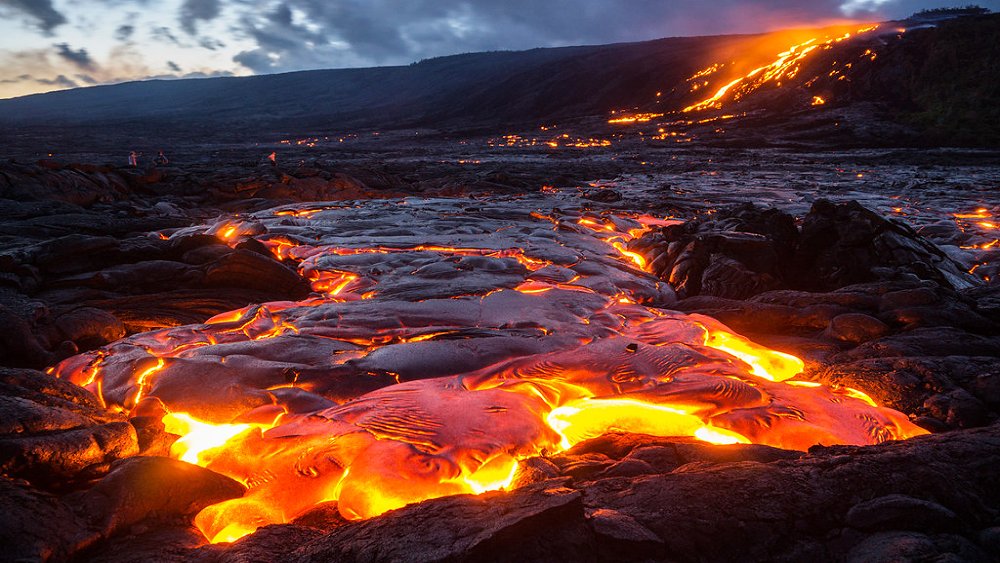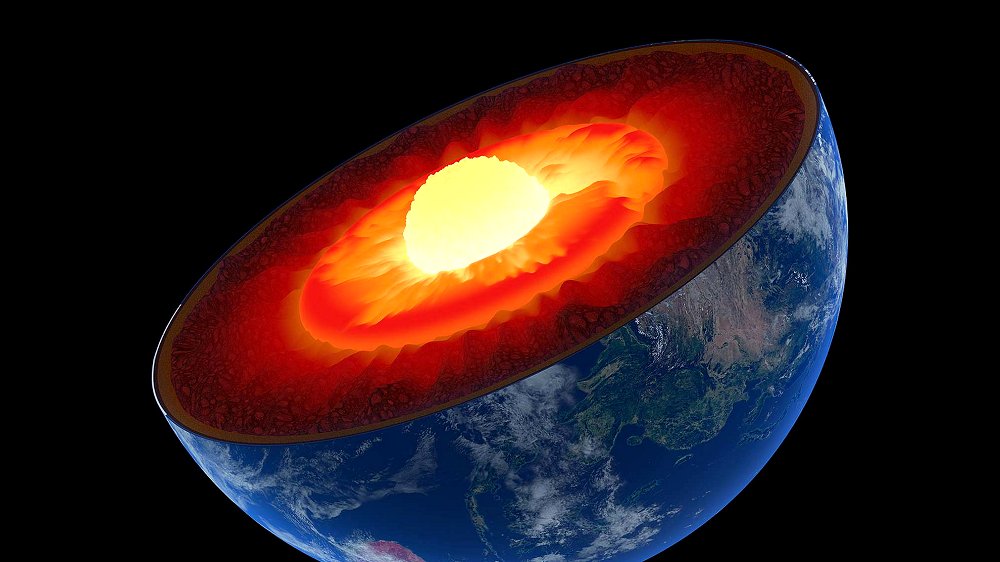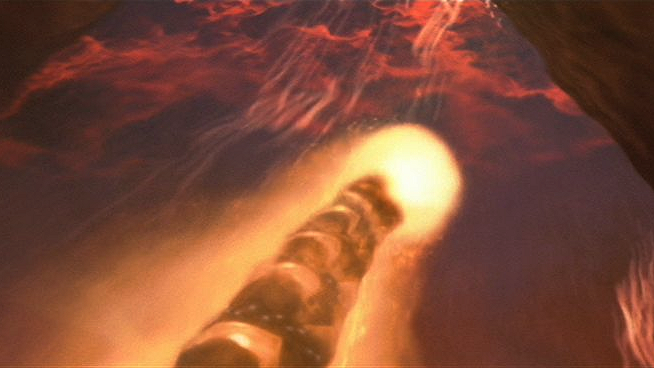Let me tell you a little bit about mantle xenoliths*, because they& #39;re very cool and pretty.
*pronounced "zeeno-lith"
A wee thread:
*pronounced "zeeno-lith"
A wee thread:
In that photo, the green stuff is peridotite—a crystalline rock that& #39;s mainly made of the minerals olivine and pyroxene, which in turn are primarily made of iron, magnesium, other alkali metals, and silicon and oxygen.
This rock makes up most of Earth& #39;s upper mantle.
This rock makes up most of Earth& #39;s upper mantle.
The grey stuff in the first photo is your common-or-garden basalt—a dark, usually fine-grained rock also made of olivine, pyroxene, and (mainly) plagioclase feldspar, that comes out like this:
But we don& #39;t know all that much about the mantle, because it& #39;s hard to get to. Mantle xenoliths are chunks of the mantle brought up by volcanic eruptions, and are thuis direct *samples* of the mantle& #39;s chemical and physical properties.
(Upper mantle is dark red in this image.)
(Upper mantle is dark red in this image.)
And so mantle xenoliths offer us a window into the mantle, its chemistry, behaviour, and evolution, and so are super useful.
Neat, huh?
They also make for some *amazing* outcrops! (Image courtesy of @zawackanator)
Neat, huh?
They also make for some *amazing* outcrops! (Image courtesy of @zawackanator)

 Read on Twitter
Read on Twitter